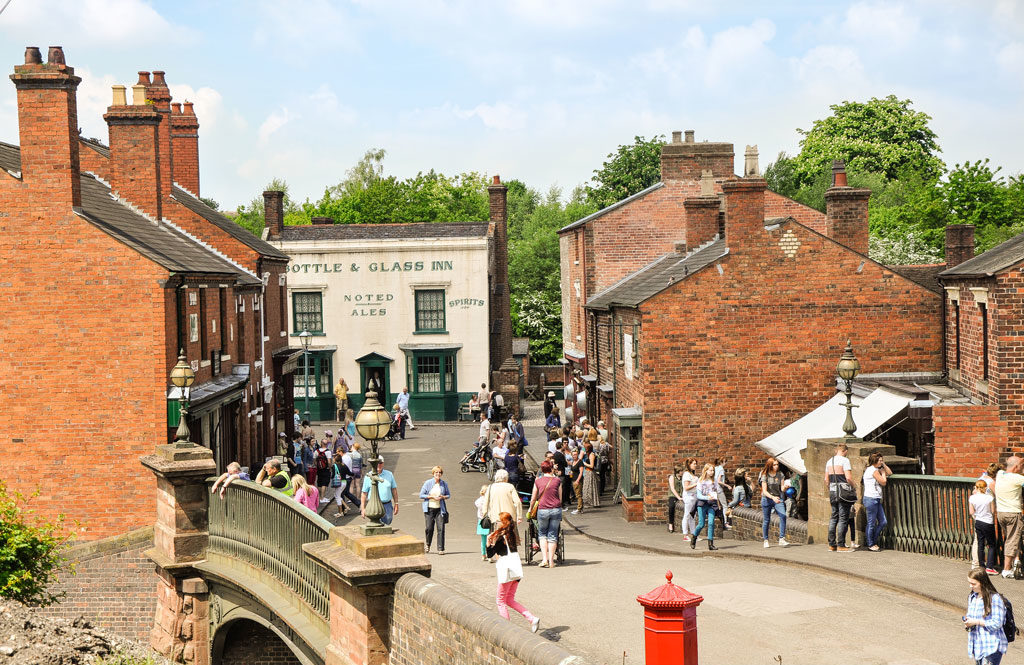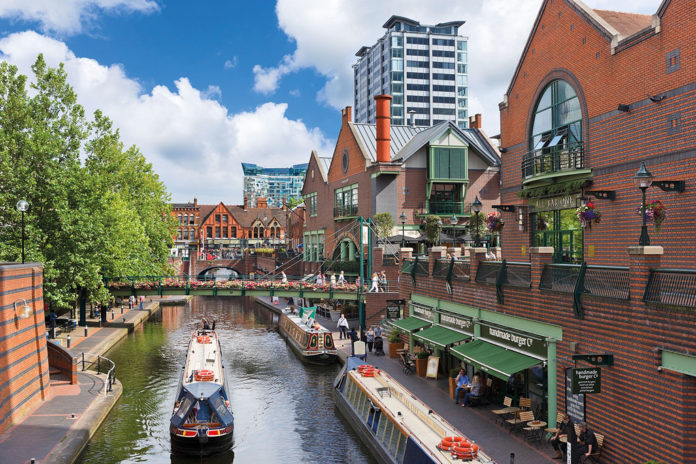Britain’s second largest city may have made its mark as an 18th-century industrial powerhouse, but this “Middle Earth” is booming with history and culture.
Getting there
There are frequent trains from London Euston to Birmingham New Street. The journey takes around two hours. www.thetrainline.com
Where to stay
One of Birmingham’s oldest hotels, the luxurious Macdonald Burlington offers guests complimentary spring water from their very own underground well. www.macdonaldhotels.co.uk
The Edgbaston, a 10-minute drive from the centre, has a stylish Art Deco interior including a glamorous cocktail lounge, and is renowned for its elegant afternoon tea. www.theedgbaston.co.uk
For a stay with history, the National Trust have two atmospheric holiday cottages in the centre of town, with the Back to Backs on their doorstep. www.nationaltrust.org.uk
Where to eat and drink
Discover the original balti at one of the many eateries in the Balti Triangle, just south of the centre, or head to the Digbeth Dining Club street-food hub for live music and food stalls. www.digbethdiningclub.co.uk
Enjoy a hearty meal and a pint at one of Birmingham’s oldest pubs, The Old Crown. www.theoldcrown.com
For cocktails, Victorian-themed gin parlour The Jekyll and Hyde is a must-visit. www.thejekyllandhyde.co.uk
Later, listen to jazz at The Jam House in the Jewellery Quarter. www.thejamhouse.com
What to do
While it’s possible to get around on foot, the city has an excellent bus and tram service, as well as trains and taxis for exploring further afield.
If you’re arriving by train into Birmingham New Street, walk to Victoria Square. As well as the grand Symphony Hall, you’ll pass the stunning Queen Victoria statue, the River Fountain and Antony Gormley’s Iron: Man sculpture.
Next, make your way to the Birmingham Museum and Art Gallery, home to the Staffordshire Hoard – the largest stash of Anglo-Saxon gold ever found – and then head to St Philip’s Cathedral, a fine example of English Baroque architecture. www.birminghammuseums.org.uk; www.birminghamcathedral.com
It’s a short walk to St Paul’s Square, the last remaining Georgian square in the city. You’re now in the Jewellery Quarter, great for shops, food and art. For a quirky detour, check out the Pen Museum. www.jewelleryquarter.net; www.penmuseum.org.uk
In the afternoon, veer south to visit the Library. Head up to the secret rooftop garden for great views. Nearby, culture vultures can enjoy contemporary art at the Ikon Gallery or stop by Brindley Place, a canalside venue that’s lined with restaurants, bars and entertainment. www.ikon-gallery.org; www.brindleyplace.com
From Gas Street Basin, heart of the canal network, it’s a short stroll to The Bullring, a shopper’s paradise. Alternatively, seek out the Back to Backs – houses built back-to-back around a communal courtyard – to experience 19th-century living; or visit Thinktank, an award-winning science museum. www.nationaltrust.org.uk; www.birminghammuseums.org.uk

Explore
If you’ve got more than a day or two in the city, explore Sarehole Mill, a 15-minute drive from the centre. The 250-year working water mill is said to have inspired the Shire in JRR Tolkien’s The Hobbit. www.birminghammuseums.org.uk
Wander stunning gardens and an elegant Jacobean mansion at Castle Bromwich Hall and Gardens, a 30-minute drive east; or, a 15-minute drive south, visit Winterbourne House and its Arts & Crafts botanical garden. Near Winterbourne, the Barber Institute of Fine Arts is one of city’s finest Art Deco buildings exhibiting works by Monet, Manet and Magritte. www.castlebromwichhallgardens.org.uk; www.winterbourne.org.uk; www.barber.org.uk
North of the city are Soho House, the Georgian home of industrialist Matthew Boulton, and 17th-century Aston Hall, a handsome redbrick building. www.birminghammuseums.org.uk
Cadbury World, home of Britain’s most popular chocolate, is a 25-minute train journey away. www.cadburyworld.co.uk
Read
A History of Cadbury by Sir Dominic Cadbury and Diane Wordsworth (Pen and Sword Books, £19.99).
This is an edited version of an article from Vol 87, Issue 4. Order your copy here






 © 2024
© 2024